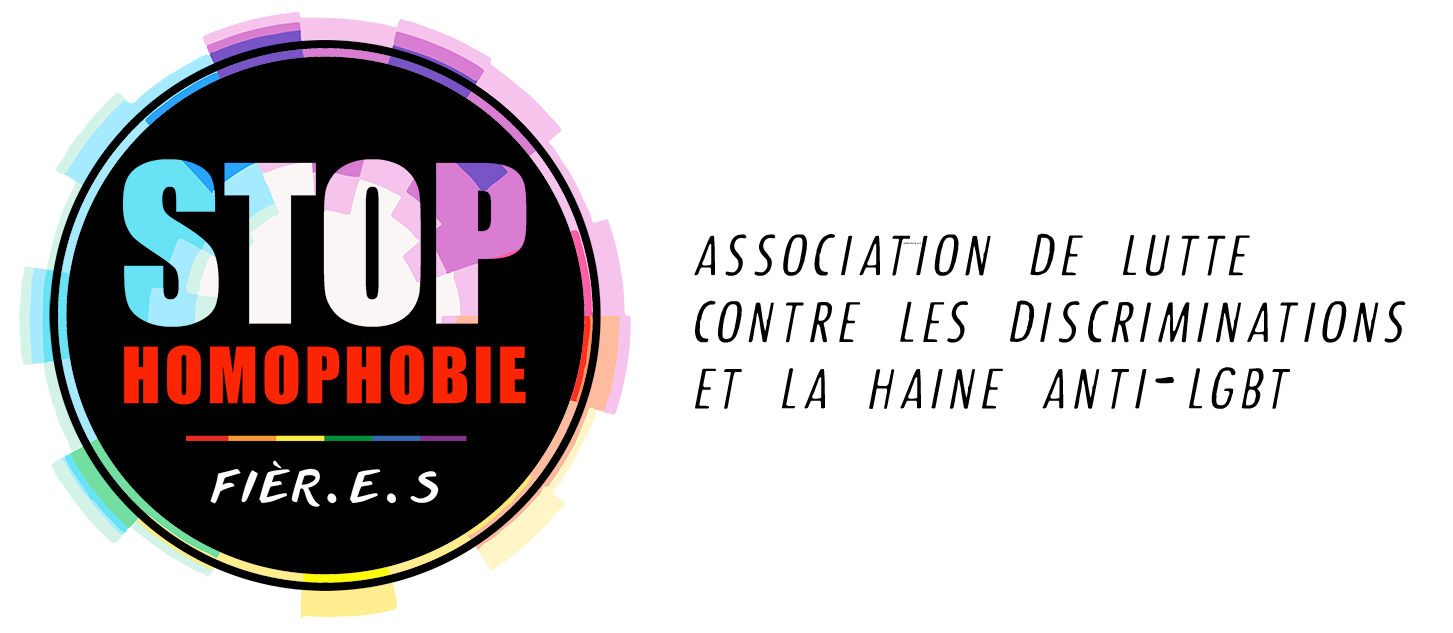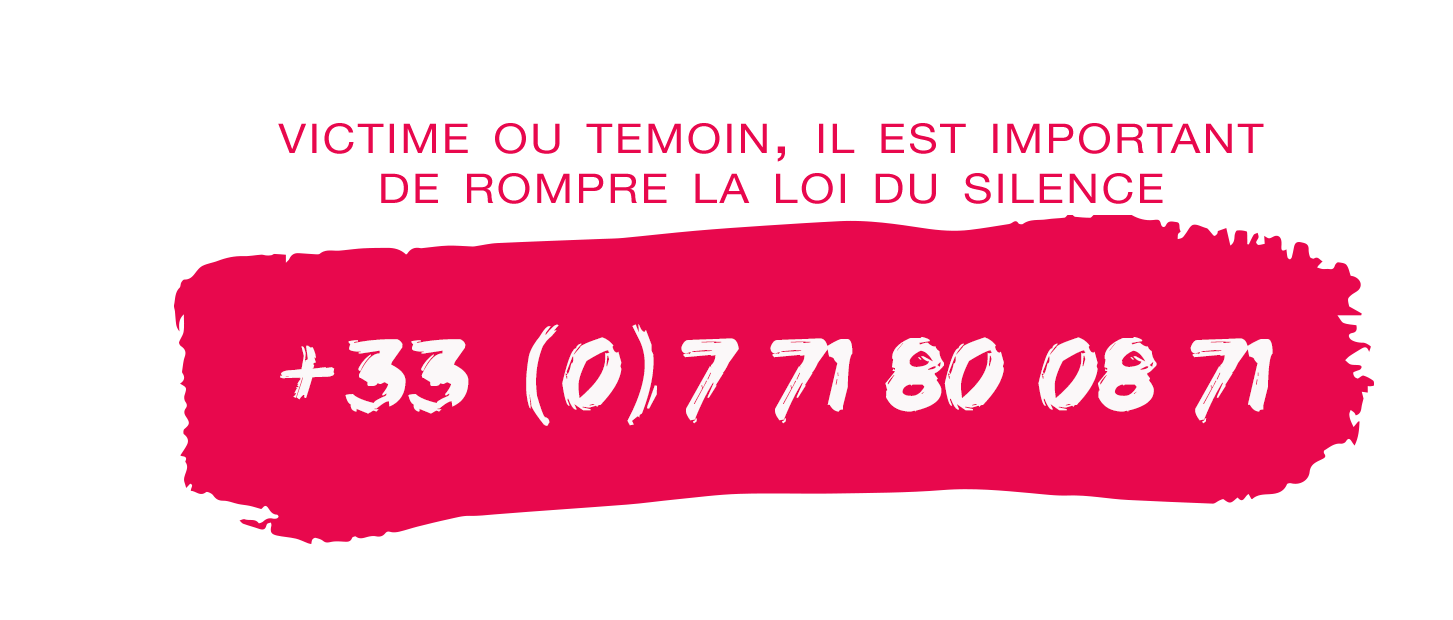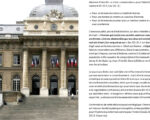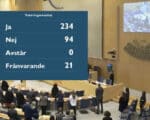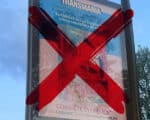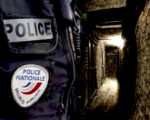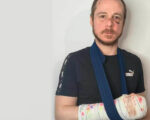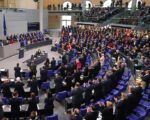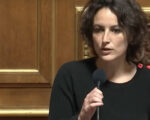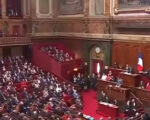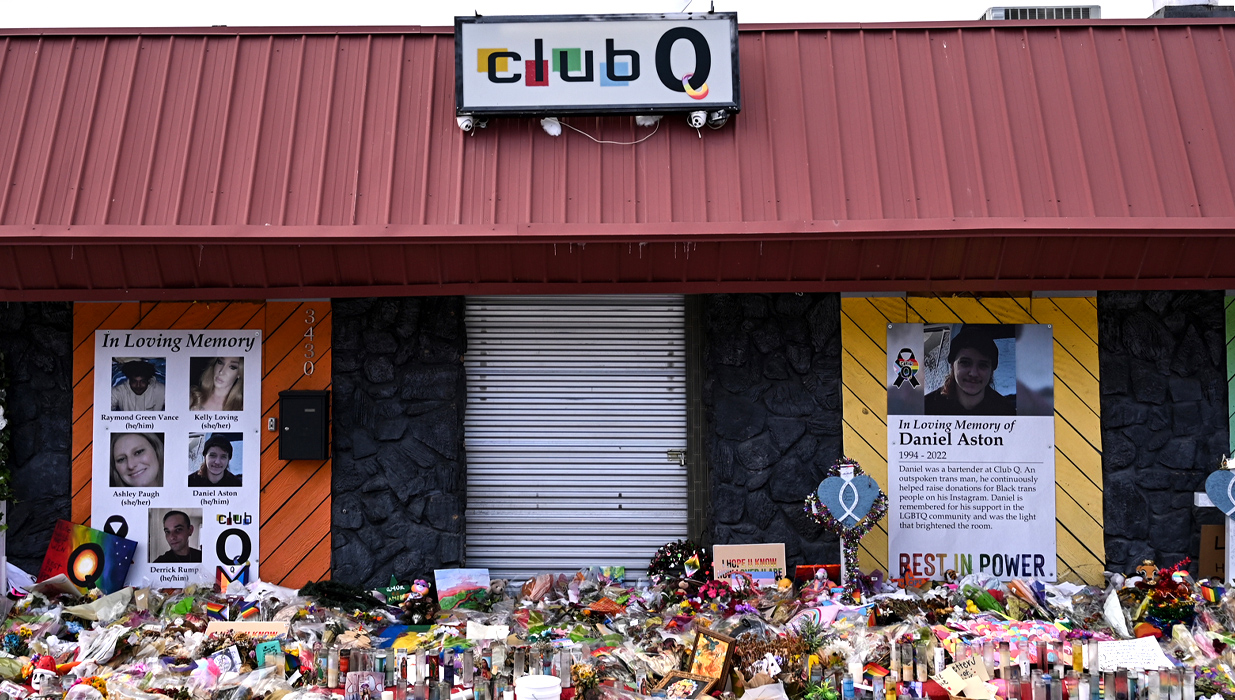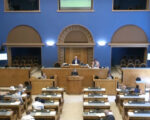>> A new analysis suggests that’s the case, and that academic work — at once solitary and social in nature — makes it particularly attractive to those who are not straight.
[spacer]
Parmi les raisons avancées, les homosexuels rechercheraient spontanément des métiers où ils peuvent être indépendants, pour éviter les discriminations.
Fini le cliché des lesbiennes camionneuses et des gays stewards… Avez-vous eu l’impression que dans votre métier, il y a proportionnellement plus de LGBT qu’ailleurs? Si vos collègues travaillent dans les ressources humaines, sont conseillers d’insertions chargés du suivi des détenus, profs à l’université, psys ou assistants sociaux, ce n’est pas qu’une impression. Et cela s’explique, d’une part, par la capacité de ces métiers à mieux se protéger des discriminations et d’autre part par le sens aigu de «perception sociale» qu’ils requièrent, et que les personnes discriminées ont dû acquérir tout au long de leur vie, rapporte Inside Higher Ed, un site spécialisé dans l’éducation.
Trois chercheurs ont étudié la part des gays et des lesbiennes dans les différents jobs disponibles aux États-Unis, à partir d’un échantillon de 4,9 millions de personnes dont près de 30.000 homosexuels et homosexuelles, répartis dans 452 métiers. Ils ont finalement pu dresser une liste des quinze métiers les plus occupés par la communauté LGBT et pour lesquels elle est surreprésentée. Et surprise, surprise: non, il n’y a pas beaucoup plus de lesbiennes chez les conducteurs de camions ni de gays chez les stewards. C’est un cliché. En revanche, ils sont très présents dans ces métiers:
> Psychologue
> Responsable des ressources humaines (Training and development specialists and managers
> Travailleur social du public, éducateur (Social and community service managers)
> Rédacteurs techniques
> Ergothérapeute
> Massothérapeute
> Urbaniste
> Producteur et réalisateur de films
> Enseignant dans le supérieur
> Conseiller d’insertion et de probation
> Employé des pompes funèbres
> Physiothérapeute
> Management de l’information (Computer and information systems management)
> Avocat, juge, magistrat
> Web developpeur
(NB: nous avons laissé l’appellation en anglais quand le strict équivalent n’était pas disponible en français)
Les lesbiennes étaient quant à elle particulièrement nombreuses chez les sociologues.
Pourquoi? Selon cette étude publiée dans la revue Administrative Science Quarterly et récemment mise en avant par le blog de la London school of economics (LSE), la prestigieuse école de sciences politiques, il y a deux raisons principales. La première réside dans les possibilités d’indépendance qu’offrent ces métiers. Psychologues, rédacteurs, enseignants ou massothérapeutes travaillent le plus souvent seuls, même s’ils peuvent avoir parfois à s’inscrire dans des équipes.
Ces métiers sont donc moins soumis à la hiérarchie que d’autres. On connaît par exemple le sacro-saint principe de la liberté d’enseignement pour les profs. Les psychologues exercent beaucoup en libéral. Et les travailleurs sociaux sont moins souvent dans des bureaux, à côté de leur chef, qu’auprès des personnes dont ils s’occupent. «Les gays et lesbiennes ont tendance à voir leurs collègues et chefs comme la principale source de mauvais traitement et de discrimination au travail», écrivent les chercheurs. En adoptant ces métiers où ils peuvent être indépendants, ils s’évitent d’être confrontés à des remarques désagréables sur leur orientation sexuelle.
La deuxième raison est que ces métiers demandent un «sens social» plus aigu, ou pour le dire autrement, qu’ils sont plus sociables et plus réceptifs aux émotions des autres. Sens dont, d’après l’étude, les homosexuels seraient mieux pourvus que les autres, ayant dû faire plus d’efforts pour s’intégrer à leurs camarades lorsqu’ils étaient plus jeunes, sous peine d’être rejetés. Ressentir soi-même une injustice permet aussi d’y être plus sensible, et de développer une plus grande empathie.
Bien sûr ce mécanisme n’est pas figé, et on peut penser qu’avec le temps et les inégalités de traitement s’estompant, cette surreprésentation de personnes homosexuelles dans certains métiers disparaîtra. Et la communauté LGBT pourra alors se réjouir, paradoxalement, d’avoir perdu, au moins relativement parlant, un peu d’empathie.
par Aude Lorriaux
[spacer]
>> Academic work is often solitary, but succeeding in the professoriate arguably requires social acumen. So is that why gay men and women are disproportionately represented among academics?
A new study investigating the phenomenon of “occupational segregation” argues that certain jobs — including that of professor — are particularly appealing to gay men and lesbians for these reasons.
“Concealable Stigma and Occupational Segregation: Toward a Theory of Gay and Lesbian Occupations” originally was published by Administrative Science Quarterly and featured recently in the London School of Economics and Political Science’s Business Review blog. Written by András Tilcsik, an assistant professor of strategic management at the University of Toronto; Michel Anteby, an associate professor of organizational behavior at Boston University; and Carly R. Knight, a Ph.D. candidate in sociology at Harvard University, it seeks to build on largely idiosyncratic explanations for why gay men and women seem to be represented in some jobs more than others. (One notable exception to such haphazard theories is that gays and lesbians are more likely to cross traditional gender barriers in their careers relative to their straight peers. Note: This story has been updated to reflect that Anteby’s first name is Michel, not Michael.)
Building on their earlier study of gay and straight workers, as well as the existing literature on concealable stigmas and stigma management, the authors developed several hypotheses about why certain kinds of jobs — including faculty positions — reportedly employ a disproportionate number of gay men and women.
Task independence is likely to be particularly important for lesbian and gay workers, the authors predicted, because “they tend to see coworkers and supervisors as the most common source of potential mistreatment and discrimination in the workplace.” In particular, the authors said, task independence allows workers “more control over information about one’s stigmatized status and also [to] limit the negative consequences of disclosure.”
That premise was supported by survey results from gay and lesbian workers in the U.S., who placed significantly higher value on task independence at work then did heterosexual respondents. In their 2014 working paper on occupational skills and preferences relative to sexual orientation, Tilcsik, Anteby and Knight found that those survey respondents who identified as gay or lesbian indicated a stronger preference for jobs in which they would “work independently from coworkers” and “accomplish tasks without depending too much on other people.” Another 2012 study found that lesbian and gay college students were more likely than their heterosexual peers to express a preference for working in their own business.
Social perceptiveness — defined as a capacity to anticipate and accurately perceive others’ intentions and reactions — is another reason gay men and women are disproportionately represented among professors, the authors presumed. Why? Because it’s key to task accomplishment in jobs that involve lots of interaction, such as that between professor and student. Moreover, they said, their recent survey research suggests that gays and lesbians have significantly higher levels of social perceptiveness relative to their peers — one half standard deviation’s worth, even after controlling for age, gender and race. (Such findings were consistent with existing qualitative research on sexual orientation and management of concealable stigma, such as literature on adolescent development suggesting that lesbian and gay youths need to develop a high level of social sensitivity and diagnostic accuracy relatively early in life as an adaptation or coping skill.)
To test their hypotheses, the authors need a large and ideally nationally representative sample in which to identify gays and lesbians and their career choices. They found that in the American Community Survey, the U.S. Census Bureau’s largest survey other than the decennial census. The authors also needed information on occupation characteristics, such as the level of task independence and social perceptiveness associated with various jobs. They found that in the Occupational Information Network, which replaced the Dictionary of Occupational Titles as the primary source of information about occupations in the U.S. economy. It measures cognitive, creative, technical and social skills of a given occupation. An additional resource was the U.S. National Longitudinal Study of Adolescent Health.
All that yielded data on 452 occupations and 4.9 million individuals, 30,343 of whom were part of a same-sex couple-led household. (Although that number seems low, when comparing same-sex cohabiting couples with other cohabiting couples, the proportion of gay and lesbian workers is in line with expectations, or about 9.3 percent of households. The Add Health data also were representative with general figures on sexual orientation, in that about 2 percent identified as gay or lesbian, 7 percent reported same-sex attraction and 10 percent reported same-sex sexual contact.)
Controlling for such variables as education level, whether a sector tended to be politically liberal or conservative, and urban location (all of which could arguably skew the results), the authors conducted three types of regression analysis. They first used the American Community Survey Data at the occupational level to examine the relationship between the proportion of gay and lesbian workers in the occupation and the extent to which the occupation requires social perceptiveness and provides task independence. Next, they applied the community survey data at the individual level. And because the community survey data only contained that on same-sex couples, not individually identifiable gay or lesbian respondents, the authors conducted an individual-level analysis with the Add Health data.
The analysis yielded lists of occupations with the highest proportion of gay and lesbian workers. Here’s a list of occupations, in descending order, in which both the proportion of gay men among male workers and the proportion of lesbians among female workers is disproportionately high. Most all of them are associated with above-average social perceptiveness and above-average task independence.
Psychologist
Training and development specialists and managers
Social and community service managers
Technical writers
Occupational therapists
Massage therapists
Urban and regional planners
Producers and directors
Postsecondary teachers
Probation officers and correctional treatment specialists
Morticians, undertakers and funeral directors
Physical therapists and exercise physiologists
Computer and information systems management
Lawyers, judges, magistrates and other judicial workers
Web developers
Psychologists show up again, along with sociologists (but not postsecondary faculty) in the analysis regarding jobs with high proportions of lesbians among female workers in female-majority occupations. The top five, in descending order, are:
Psychologists
Probation officers/correctional treatment specialists
Training and development specialists and managers
Sociologists
Social and community service managers
No academic-specific jobs show up in the top five lists concerning gay men in male- or female-dominated jobs, or for women in male-dominated jobs.
The authors note that their analysis begins to explain the seemingly heterogeneous kinds of jobs in which gays and lesbians have clustered over time — from professor to probation officer — and what kinds of unique skills these workers bring to the table. The study says that destigmatization might over time impact these patterns, but that they’re likely to remain for the time being.
“Even if destigmatization took place rapidly, broad occupational patterns are slow to change because they continue to reflect earlier educational and career choices and because network-based mechanisms (such as homophily in job referrals) might help maintain segregation patterns that had initially emerged as a response to stigmatization,” it says.
Eddy Ng, the F. C. Manning Chair in Economics and Business at Dalhousie University in Nova Scotia, helped write the 2012 study on college students’ career expectations in relation to sexual orientation. He pointed out that the study was right to control for education level and political leanings in that professors are obviously highly educated and tend to be more socially liberal that workers in many other fields. But he also pointed out that higher education’s tenure system and its guarantees of academic freedom might add “to the protection that [lesbian, gay, bisexual and transgender] individuals may deem important.”
Philip Cohen, a professor of sociology at the University of Maryland at College Park and author of The Family: Diversity, Inequality and Social Change, frequently blogs about demographic issues with implications for LGBT populations. He urged caution regarding identifying people as just gay or straight, but said he recognized it was sometimes necessary in research.
Over all, Cohen said, he was impressed with the study and called its premise plausible. Like Ng, he also offered an additional possible explanation for the finding regarding professors in particular. Namely, as a result of their status in a marginalized group, gays and lesbians “may also be more likely to value careers that involve critical examination of social life, including jobs as sociologists or college teachers,” Cohen said.
Another possible interpretation of the results is that those gay men and lesbians who are attracted to jobs valuing social perception and allowing task independence are also more likely to identify their gay or lesbian sexual orientation, he added via email. “They are, in a way, more ‘out’ people. It may be that there are many more gay men and lesbians in jobs that don’t value these traits, but they are less likely to be out as gay or lesbian.”
Tilcsik, the lead author, said the paper tried to explain economic trends rather than provide useful data for any one sector. But he said a good next step might be to “replicate this type of analysis with more fine-grained data within a particular field,” such as college and university faculty. That could help reveal to a much greater degree how the trend plays out in higher education, he suggested.
